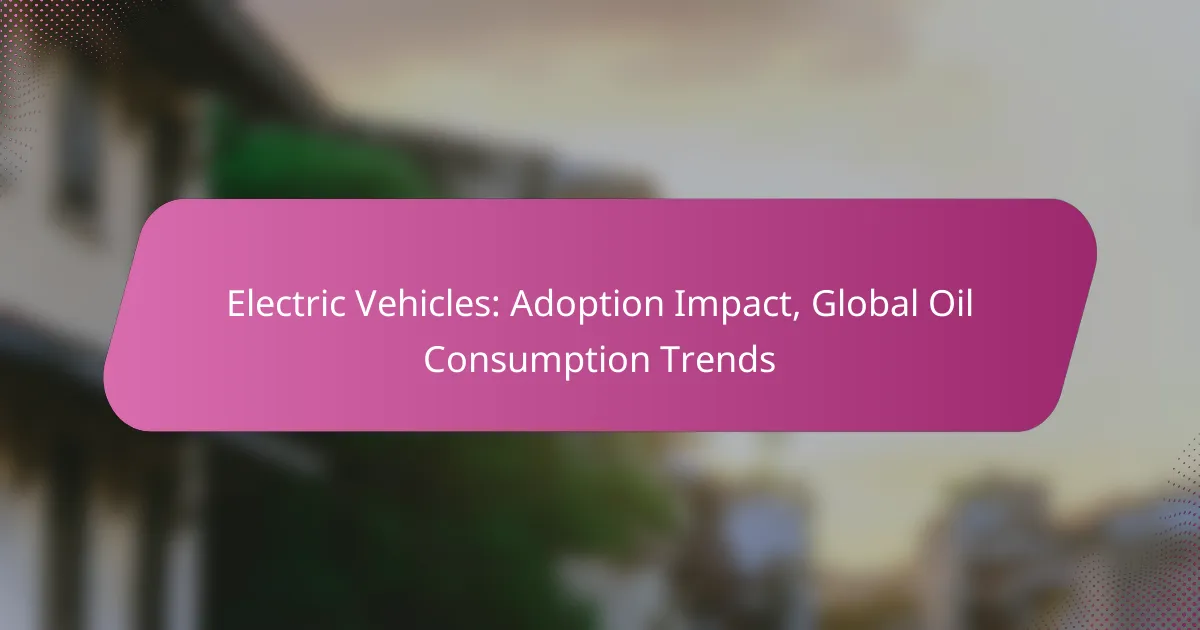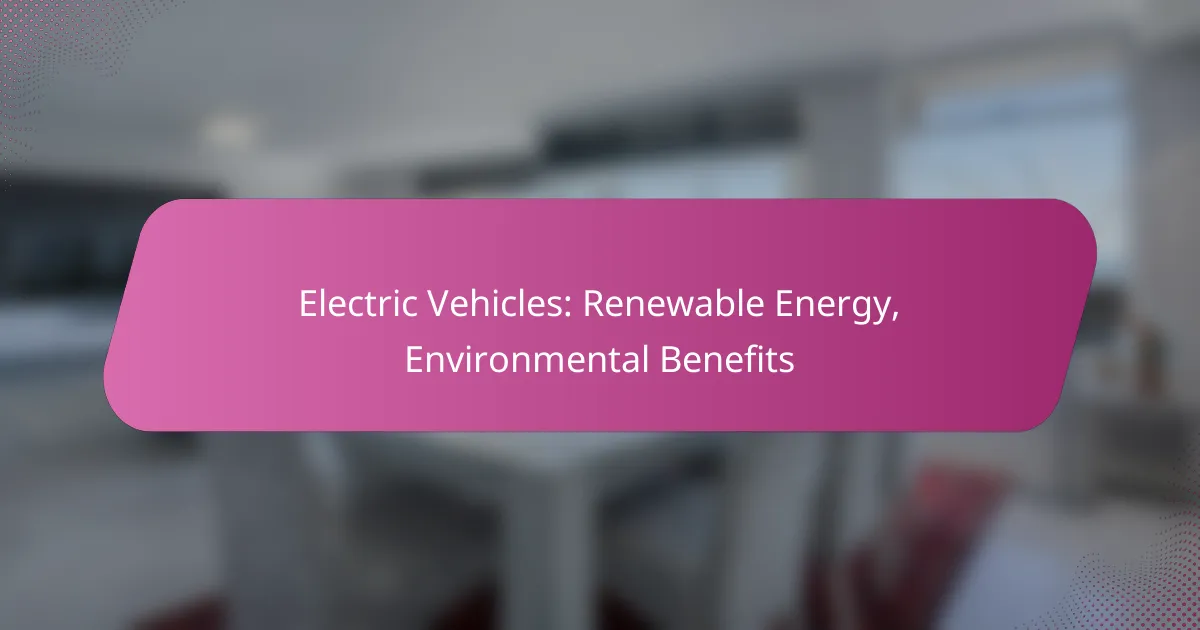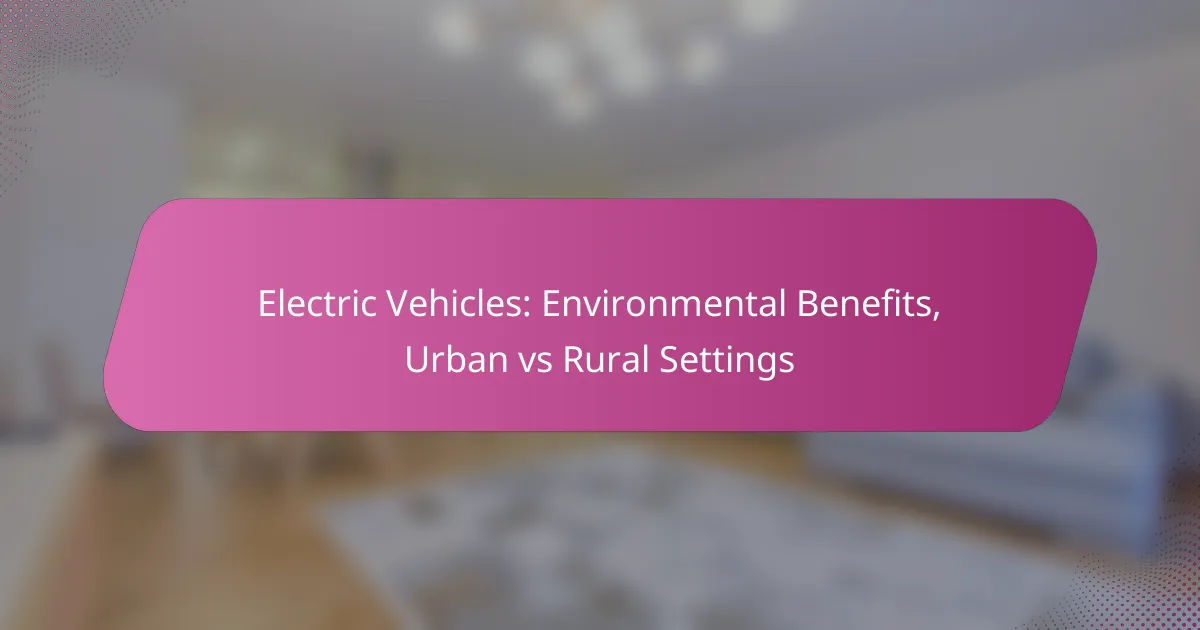Electric vehicles (EVs) play a crucial role in reducing urban air pollution by eliminating tailpipe emissions and decreasing dependence on fossil fuels. Major cities like Los Angeles, New York City, London, and Beijing are at the forefront of this transition, implementing initiatives that promote EV usage and contribute to cleaner air and improved public health.
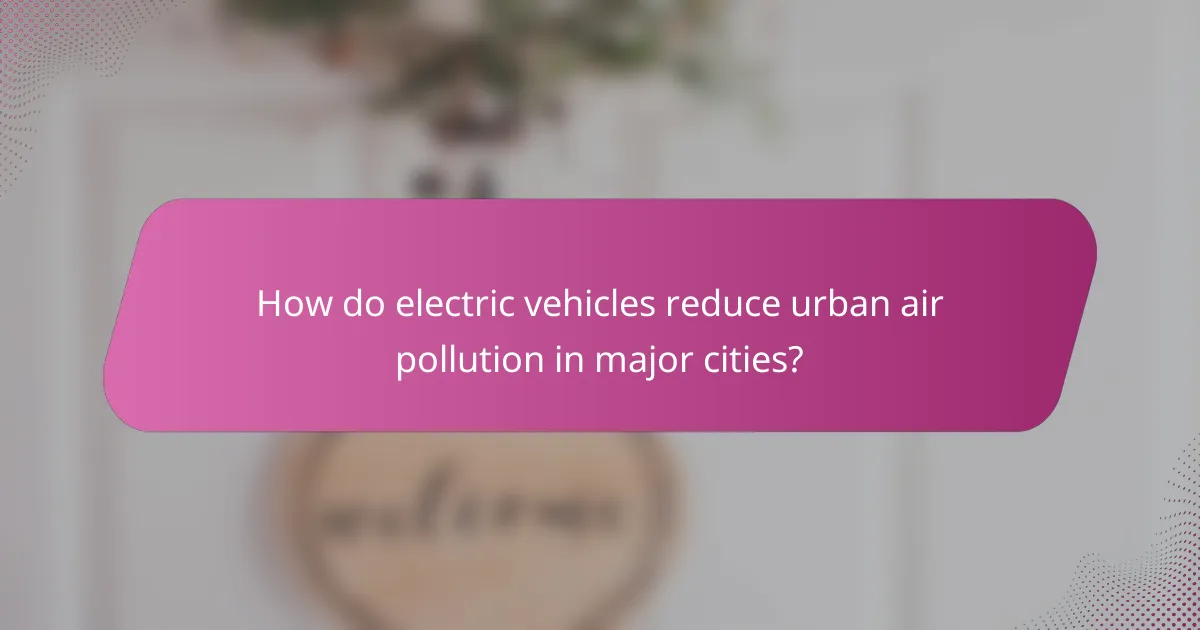
How do electric vehicles reduce urban air pollution in major cities?
Electric vehicles (EVs) significantly lower urban air pollution by emitting no tailpipe pollutants and reducing reliance on fossil fuels. This transition leads to cleaner air, particularly in densely populated areas where vehicle emissions are a major contributor to poor air quality.
Lower emissions of nitrogen oxides
Electric vehicles produce negligible nitrogen oxides (NOx) compared to traditional gasoline and diesel vehicles. NOx emissions are a primary contributor to smog and respiratory problems, making their reduction crucial for urban health.
In cities with strict air quality regulations, such as those in the European Union, the shift to EVs can help meet or exceed compliance standards, improving public health outcomes and reducing healthcare costs associated with air pollution.
Reduction of particulate matter
EVs contribute to a significant decrease in particulate matter (PM) emissions, which are harmful tiny particles that can penetrate the lungs and bloodstream. Unlike combustion engines, electric vehicles do not emit PM directly, leading to cleaner urban air.
Major cities like Los Angeles and London have reported improvements in air quality metrics as EV adoption increases, showcasing the potential for reduced health risks associated with PM exposure.
Improved urban air quality
The widespread adoption of electric vehicles leads to improved urban air quality by reducing overall emissions from the transportation sector. Cleaner air can enhance the quality of life for residents, particularly in urban centers with high traffic congestion.
As cities invest in EV infrastructure, such as charging stations and incentives for EV purchases, they can further accelerate this positive trend, fostering a healthier environment and promoting sustainable urban living.
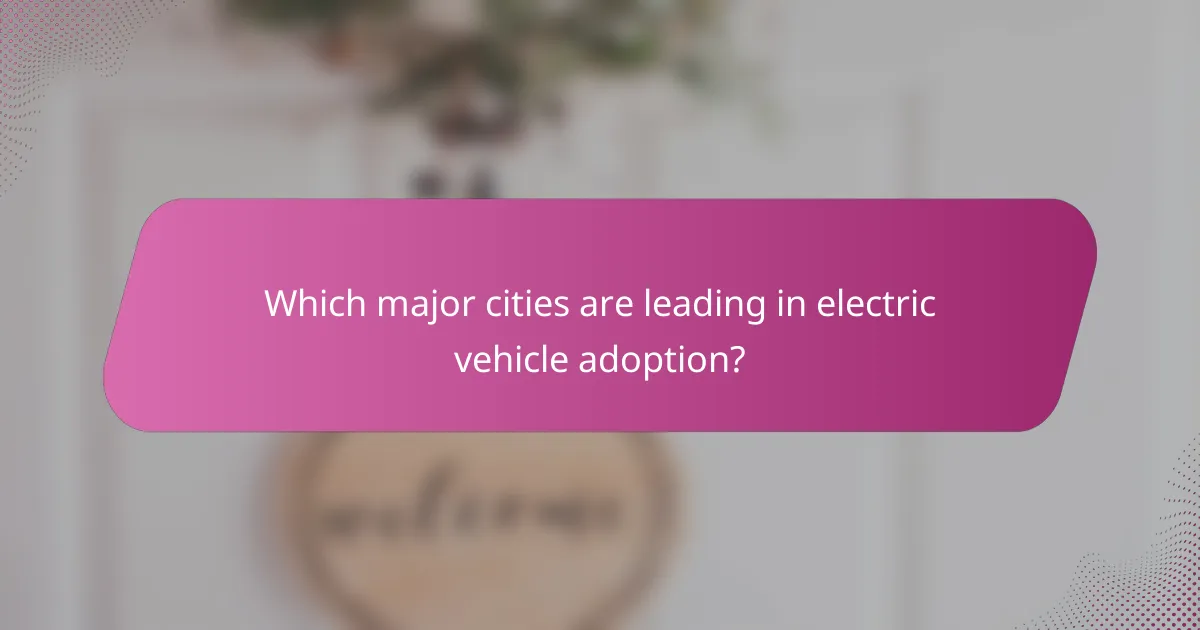
Which major cities are leading in electric vehicle adoption?
Major cities leading in electric vehicle (EV) adoption include Los Angeles, New York City, London, and Beijing. These urban areas have implemented various initiatives to promote EV usage, significantly reducing urban air pollution and enhancing sustainability.
Los Angeles
Los Angeles is at the forefront of electric vehicle adoption in the United States, driven by its extensive charging infrastructure and state incentives. The city aims to have over 1 million EVs on the road by 2025, supported by programs that offer rebates and tax credits for EV purchases.
Key initiatives include the installation of thousands of public charging stations and partnerships with private companies to expand access. The city also promotes EVs through educational campaigns highlighting their environmental benefits and cost savings.
New York City
New York City is rapidly increasing its electric vehicle presence, with a goal to electrify its entire fleet by 2040. The city has introduced various measures, such as the installation of charging stations and incentives for residents to switch to EVs.
In addition to public charging infrastructure, NYC offers programs like the NYC Clean Fleet initiative, which focuses on transitioning city-operated vehicles to electric. This commitment not only reduces air pollution but also enhances public health in densely populated areas.
London
London has made significant strides in electric vehicle adoption, with plans to become a zero-emission city by 2030. The city has implemented the Ultra Low Emission Zone (ULEZ), which charges drivers of high-polluting vehicles, encouraging the switch to electric alternatives.
London’s extensive charging network, including rapid chargers, supports the growing number of EVs. Local authorities also provide grants for residents to install home charging points, making EV ownership more accessible.
Beijing
Beijing is a leader in electric vehicle adoption in Asia, driven by government policies aimed at reducing air pollution. The city offers substantial subsidies for EV purchases, making them financially attractive to consumers.
Beijing has also invested heavily in charging infrastructure, with thousands of public charging stations available across the city. The government encourages the use of electric taxis and buses, further contributing to cleaner air and reduced emissions.
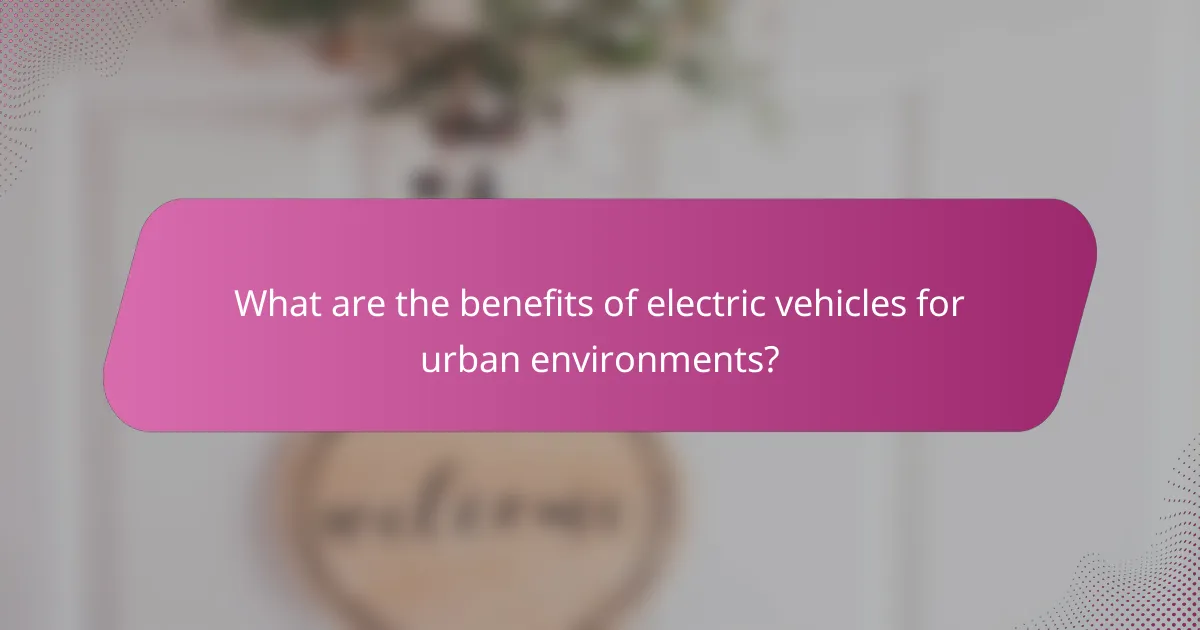
What are the benefits of electric vehicles for urban environments?
Electric vehicles (EVs) significantly improve urban environments by reducing pollution and enhancing the quality of life. Their adoption leads to cleaner air, quieter streets, and better health outcomes for city residents.
Decreased greenhouse gas emissions
Electric vehicles contribute to lower greenhouse gas emissions compared to traditional gasoline or diesel vehicles. By using electricity, especially from renewable sources, EVs can reduce carbon footprints by a substantial margin, often by tens of percent.
Many cities are implementing policies to encourage EV adoption, such as tax incentives and charging infrastructure development. This shift not only helps meet local and national climate goals but also fosters a cleaner atmosphere for urban dwellers.
Noise pollution reduction
EVs operate much more quietly than their internal combustion engine counterparts, leading to significant reductions in noise pollution. This is particularly beneficial in densely populated urban areas where noise can disrupt daily life and contribute to stress.
Studies suggest that the noise levels in cities could drop by several decibels with increased EV usage, promoting a more peaceful urban environment. Cities may consider establishing low-noise zones to further enhance this benefit.
Enhanced public health outcomes
The reduction in air and noise pollution from electric vehicles directly correlates with improved public health outcomes. Cleaner air can lead to lower rates of respiratory diseases and other health issues associated with pollution.
Moreover, quieter streets can encourage outdoor activities, such as walking and cycling, which contribute to overall community well-being. Urban planners should prioritize EV-friendly initiatives to maximize these health benefits for residents.

What policies support electric vehicle adoption in cities?
Policies that support electric vehicle (EV) adoption in cities typically include financial incentives, infrastructure investments, and regulatory measures. These approaches aim to reduce barriers to entry for consumers and encourage the transition to cleaner transportation options.
Incentives for EV purchases
Incentives for purchasing electric vehicles can significantly lower the upfront costs for consumers. Many cities and countries offer tax credits, rebates, or grants that can range from a few hundred to several thousand dollars, depending on the vehicle’s price and local regulations.
For example, in the United States, federal tax credits can provide up to $7,500 for qualifying EVs, while some states offer additional incentives. These financial benefits make EVs more attractive, especially in urban areas where residents may be more price-sensitive.
Investment in charging infrastructure
Investment in charging infrastructure is crucial for supporting electric vehicle adoption. Cities are increasingly installing public charging stations to alleviate range anxiety and make EV ownership more convenient. This infrastructure can include fast chargers located in strategic areas such as parking lots, shopping centers, and along major roadways.
For effective implementation, cities may partner with private companies or utilize public funding to expand charging networks. A well-planned charging infrastructure can enhance the overall EV experience and encourage more residents to switch to electric vehicles.
Low-emission zones
Low-emission zones (LEZs) are designated areas in cities where access is restricted for high-emission vehicles. These zones aim to improve air quality and promote the use of electric vehicles by incentivizing cleaner transportation options.
In practice, cities like London and Berlin have implemented LEZs that charge fees for non-compliant vehicles or offer exemptions for electric vehicles. This regulatory approach not only encourages EV adoption but also contributes to reduced urban air pollution, benefiting public health and the environment.
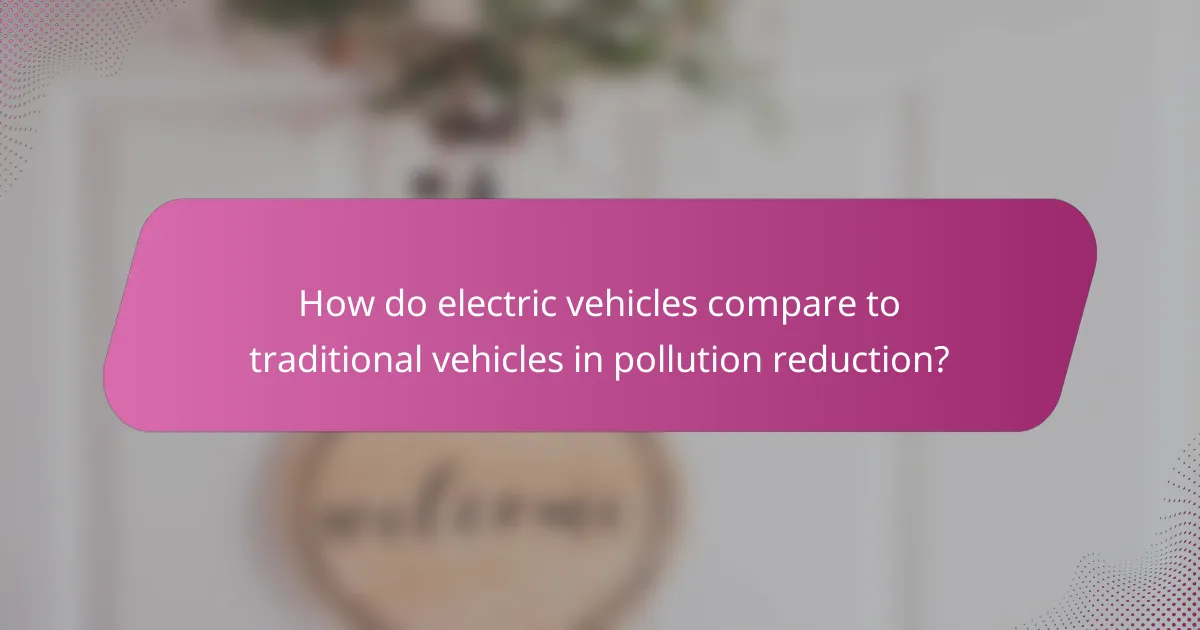
How do electric vehicles compare to traditional vehicles in pollution reduction?
Electric vehicles (EVs) significantly reduce urban air pollution compared to traditional gasoline or diesel vehicles. Their zero tailpipe emissions contribute to cleaner air, especially in densely populated areas where vehicle emissions are a major source of pollution.
Lifecycle emissions analysis
Lifecycle emissions analysis evaluates the total greenhouse gas emissions from a vehicle’s production, operation, and disposal. While EVs produce no emissions during operation, their overall impact depends on the energy sources used for electricity generation and the manufacturing processes involved. Studies suggest that EVs can reduce lifecycle emissions by 30-50% compared to conventional vehicles, depending on the local energy mix.
For instance, regions relying heavily on coal for electricity may see lower benefits from EV adoption, while areas with a high percentage of renewable energy can achieve significant reductions in overall emissions.
Fuel source impact
The fuel source for electricity generation plays a crucial role in determining the pollution reduction potential of electric vehicles. In cities where renewable energy sources like wind, solar, or hydro are predominant, EVs can operate with minimal environmental impact. Conversely, if the grid is primarily powered by fossil fuels, the benefits of switching to EVs may be less pronounced.
It’s essential for urban planners and policymakers to promote cleaner energy sources alongside EV adoption to maximize pollution reduction. Incentives for renewable energy investments can further enhance the environmental benefits of electric vehicles.
Urban traffic patterns
Urban traffic patterns significantly influence the effectiveness of electric vehicles in reducing pollution. Stop-and-go traffic, common in cities, leads to higher emissions from traditional vehicles, while EVs can operate more efficiently in these conditions due to regenerative braking and lower idle emissions. This efficiency can lead to a noticeable drop in local air pollutants.
Moreover, implementing policies that encourage EV use, such as dedicated lanes or charging infrastructure, can optimize their benefits in urban settings. Cities that prioritize public transportation and cycling can further reduce reliance on personal vehicles, enhancing air quality and reducing congestion.

What challenges do cities face in promoting electric vehicles?
Cities encounter several challenges in promoting electric vehicles (EVs), including infrastructure, policy support, and public awareness. Addressing these issues is crucial for reducing urban air pollution and enhancing the adoption of EV technology.
Charging infrastructure limitations
One of the primary challenges cities face is the limited availability of charging infrastructure. Many urban areas lack sufficient charging stations, making it inconvenient for EV owners to recharge their vehicles, especially in densely populated regions where parking is at a premium.
To effectively promote EV adoption, cities must invest in expanding charging networks. This includes installing fast chargers in public spaces, residential areas, and workplaces. A well-distributed network can alleviate range anxiety and encourage more drivers to switch to electric vehicles.
Additionally, cities should consider partnerships with private companies to accelerate the deployment of charging stations. Offering incentives for businesses to install chargers can enhance accessibility and convenience for EV users, ultimately supporting a cleaner urban environment.

